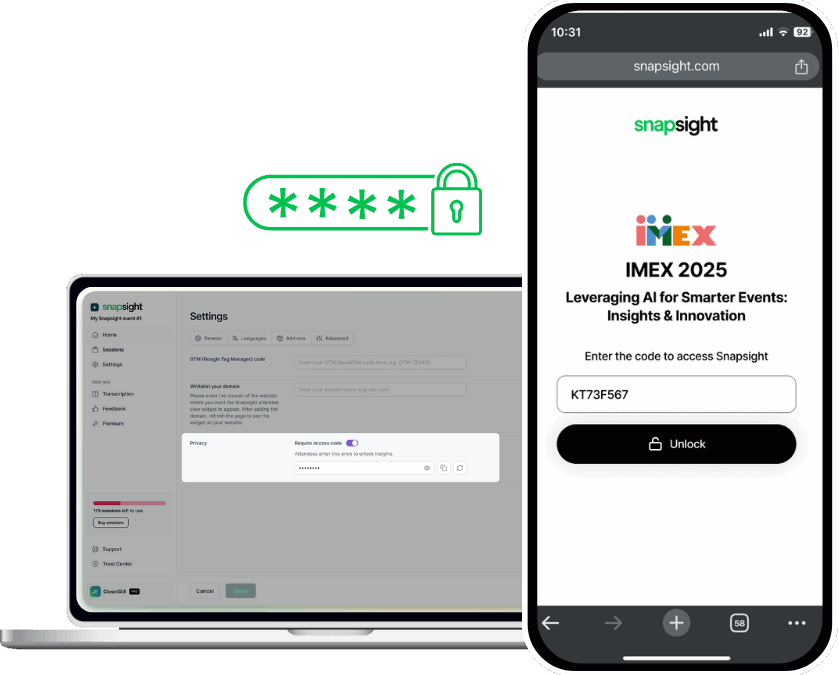Are you missing valuable content from your events? Event organizers face a common challenge: capturing and utilizing the wealth of information shared during presentations, panels, and discussions. A simple transcription service could be the solution you’re looking for.
Understanding Transcription Service Fundamentals
Transcription services convert spoken language into written text. For event platforms, these services come in two main varieties:
Real-time transcription happens as speakers talk, providing immediate text versions of presentations. This approach allows attendees to follow along with written content during the event itself.
Post-event transcription processes recordings after the event concludes. While this method typically offers higher accuracy, it doesn’t support live engagement.
The quality of transcription has improved dramatically with AI-powered solutions. Modern simple transcription service options can achieve accuracy rates above 95% in optimal audio conditions. This accuracy becomes particularly important for technical events where specialized terminology is common.
Multi-language support is another crucial factor for events with international audiences. The best transcription services can handle dozens of languages, making content accessible to global participants without requiring separate translation services.
Technical Requirements for Integration
Integrating a simple transcription service with your event platform requires attention to several technical details:
API compatibility is the foundation of successful integration. Your event platform needs to communicate effectively with the transcription service’s API. This involves understanding authentication methods, request formats, and response handling.
Audio capture setup directly impacts transcription quality. Clear audio input requires proper microphone placement, noise reduction, and audio preprocessing. For virtual events, this means ensuring speakers have quality microphones and stable internet connections.
Data flow architecture must handle the transmission of audio to the transcription service and the return of text data. This requires planning for:
- Audio streaming protocols
- Text data storage
- Real-time display mechanisms
- Backup systems for connection interruptions
Security and privacy considerations cannot be overlooked. Audio and transcribed content may contain sensitive information. Your integration must include:
- End-to-end encryption
- Secure storage practices
- Compliance with relevant regulations (GDPR, CCPA)
- Permission management for accessing transcripts
Scalability becomes important when handling multiple concurrent sessions or large events. Your infrastructure must accommodate varying loads without degrading performance.
Leveraging Transcription Data for Attendee Engagement
Raw transcription text provides limited value on its own. The real power comes from transforming this text into formats that enhance understanding and engagement.
Key takeaways extraction helps attendees focus on the most important points. By processing transcribed text through natural language understanding algorithms, platforms can identify and highlight critical information.
Snapsight’s Key Takeaways feature does exactly this, distilling complex presentations into accessible, actionable items that attendees can easily reference.
Visualization techniques turn text-heavy transcripts into engaging graphical representations. Idea clouds, for example, display the most significant concepts from a session, making it easy to identify themes and relationships between ideas.
Accessibility benefits extend beyond language barriers. Transcription services help attendees with hearing impairments, those who process information better through reading, and anyone who wants to review content without rewatching entire sessions.
QR code implementation offers a seamless way for attendees to access transcribed content on their personal devices. By scanning displayed codes, participants can follow along with presentations in real-time or save content for later review.
Post-Event Data Utilization
Transcription value continues long after events end. Smart utilization of this data can provide ongoing benefits.
Archiving and searchability turn transcriptions into a valuable knowledge base. When properly indexed, transcribed content becomes searchable, allowing organizers and attendees to locate specific information without reviewing hours of recordings.
Content repurposing opportunities abound with comprehensive transcriptions. Event content can be transformed into blog posts, white papers, social media snippets, and training materials with minimal additional effort.
Analytics possibilities from transcribed content include:
- Topic frequency analysis
- Speaker contribution measurement
- Audience question patterns
- Technical terminology tracking
Theme and trend identification helps organizers understand what topics generated the most discussion or interest. This information proves invaluable for planning future events and content.
Implementation Best Practices
Successful transcription service integration follows these key steps:
- Select the right service based on your specific needs (accuracy requirements, language support, technical compatibility)
- Start with a limited pilot before full implementation
- Configure audio capture equipment for optimal sound quality
- Test thoroughly with various speakers and acoustic conditions
- Train staff on managing the transcription system
- Create fallback procedures for technical issues
- Gather user feedback after initial implementation
- Optimize based on real-world performance
Common implementation challenges include:
- Inadequate audio quality causing accuracy problems
- Network interruptions affecting real-time services
- Integration complexity with existing platforms
- Resource requirements for processing multiple simultaneous sessions
Addressing these challenges proactively ensures smoother implementation and better results.
Why This Matters
Event platforms that successfully integrate transcription services gain significant advantages:
- Increased content accessibility
- Enhanced value for attendees
- More opportunities for content reuse
- Better insights from event data
- Improved searchability of event archives
The technology continues to advance, with improvements in accuracy, language support, and specialized terminology handling. Event platforms that adopt transcription services now position themselves to benefit from these ongoing developments.
Transform Your Events with Snapsight
Ready to capture every valuable insight from your events? Snapsight offers world-class real-time content summarization with simple transcription service integration. Our platform delivers actionable insights for both attendees and organizers with no additional setup needed.With support for over 40 languages and features like Key Takeaways and Idea Cloud visualization, Snapsight transforms raw transcriptions into meaningful, shareable content. Sign up for free today and start delivering better event insights—in a snap.

